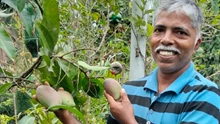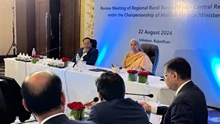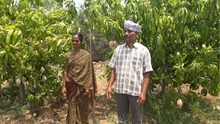
The Food and Agriculture Organization of the United Nations (FAO) presented three crucial publications during the Committee for the Review of the Implementation of the Convention (CRIC) 21 in an effort to take preventative measures against the growing threat that Sand and Dust Storms (SDS) pose to the global agricultural sector. These reports aim to mitigate the adverse effects of SDS on crops, pastures, livestock, and ecosystems, while safeguarding the livelihoods of millions dependent on agriculture.
SDS pose a significant challenge to agriculture, which paradoxically also contributes to these storms through unsustainable land and water management, desertification, and land degradation. Recognizing this dual role, the FAO underscores the necessity of implementing sustainable practices to reduce both the occurrence and impact of SDS.
The first publication, “Sand and Dust Storms: A Guide to Mitigation, Adaptation, Policy, and Risk Management Measures in Agriculture,” offers a comprehensive overview of the origins, effects, and mitigation strategies related to SDS in the agricultural sector. It includes insights from multiple case studies, providing practical recommendations for farmers, herders, local administrators, and governments to mitigate risks and lessen the adverse impacts of SDS. This guide was developed in collaboration with national and international experts, ensuring a broad and informed perspective.
Complementing this guide, the FAO released two country-specific reports: “Contingency Planning Process for Catalysing Investments and Actions to Enhance Resilience Against Sand and Dust Storms in Agriculture in the Islamic Republic of Iran” and “Preparing for Sand and Dust Storm Contingency Planning with Herding Communities: A Case Study on Mongolia.” These reports are products of an interregional technical cooperation programme on SDS, detailing a conceptual framework for hazard risk and vulnerability assessment, and providing blueprints for effective contingency planning in the agricultural sectors of Iran and Mongolia.
As climate change is expected to increase the frequency and intensity of SDS, the need for integrated short-term responses and long-term sustainable development actions is more pressing than ever. The FAO emphasizes that sustainable climate financing and strategic planning are critical to building resilient agrifood systems, particularly for vulnerable communities reliant on agriculture.
Through these publications, the FAO seeks to bridge knowledge gaps and offer actionable solutions to combat SDS, ultimately aiming to fortify global agricultural resilience against these environmental challenges.











